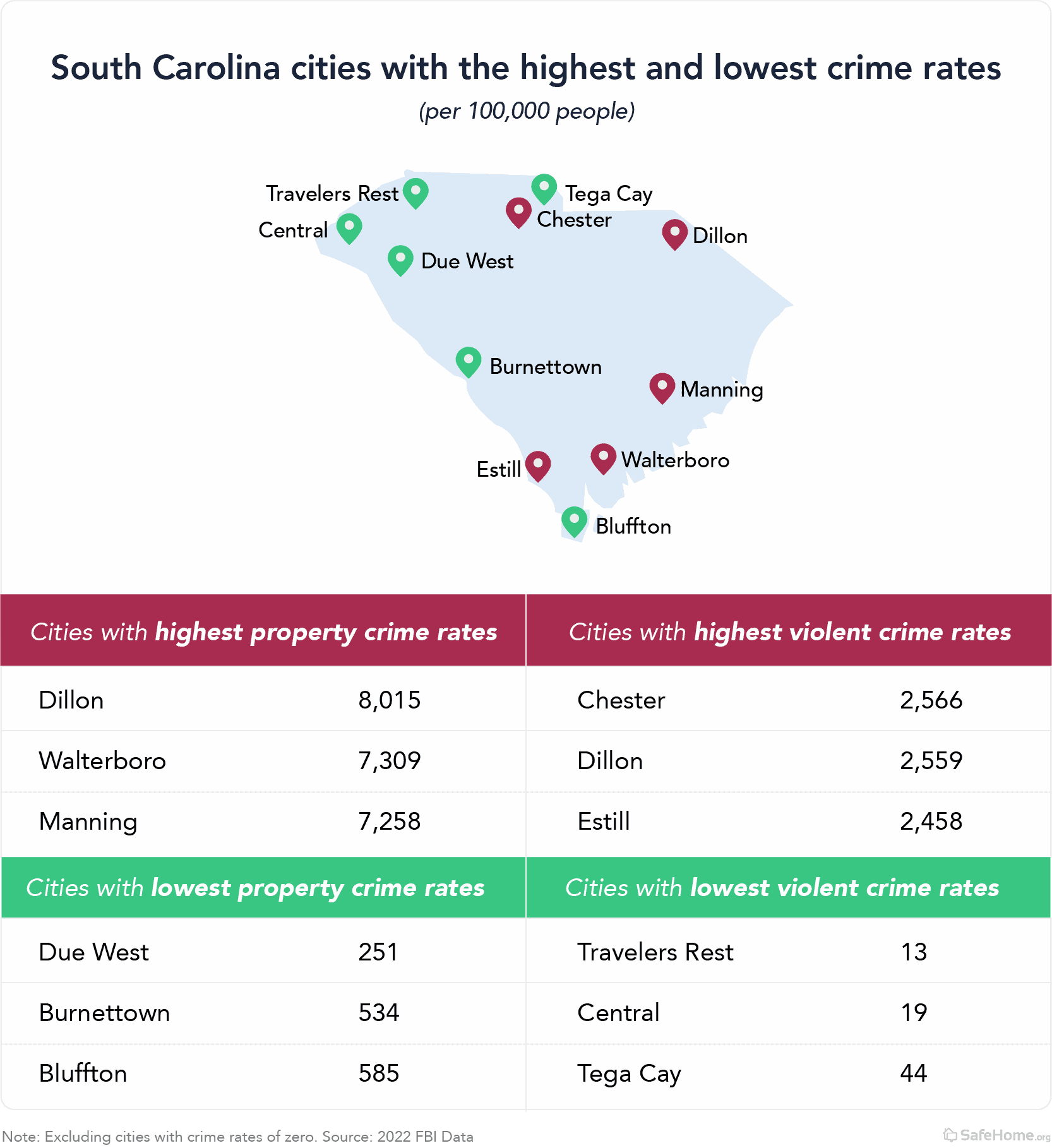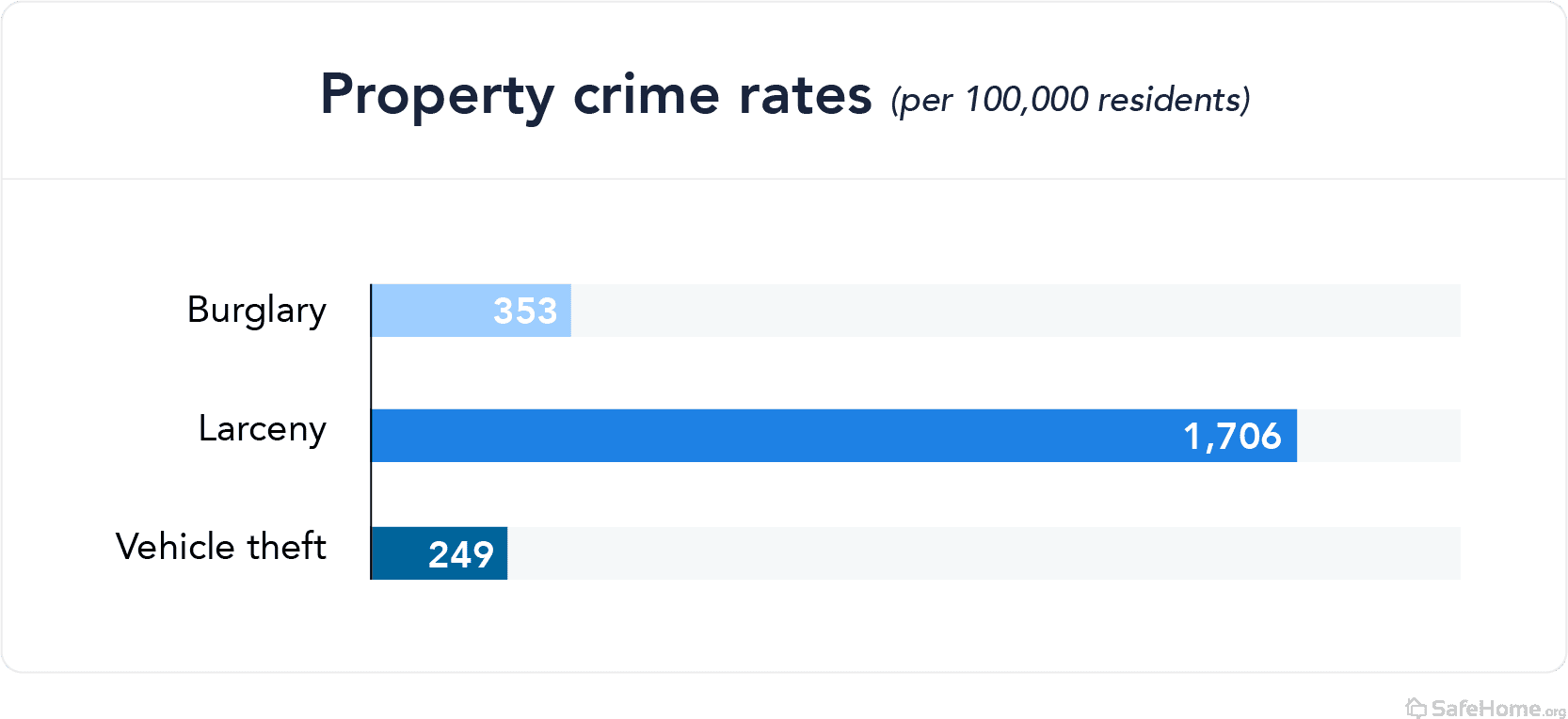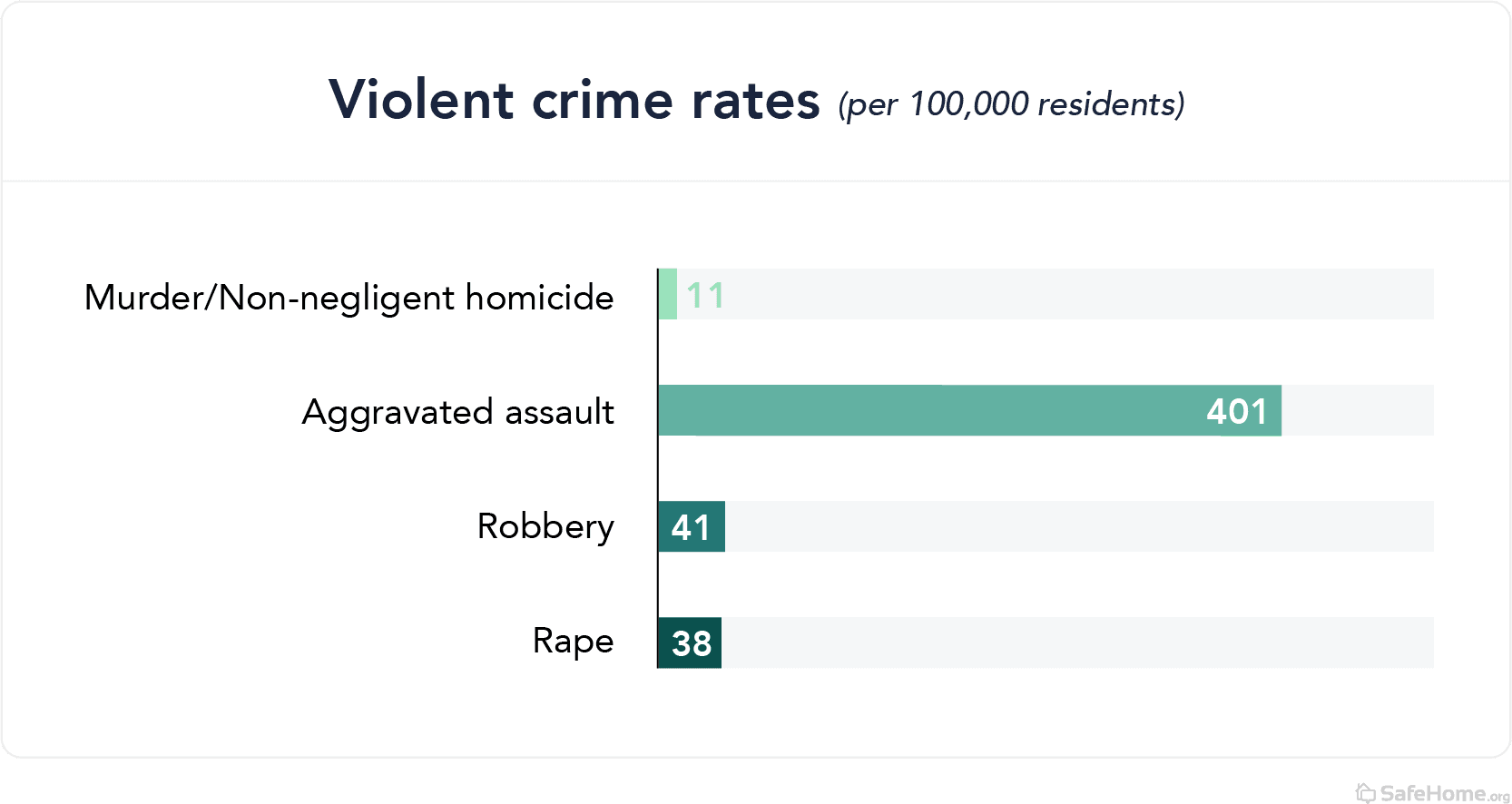The Safest and Most Dangerous Cities in South Carolina

Though the state is most famous for Myrtle Beach, Fort Sumter, down-home southern barbecue cooking, and exotic Frogmore stew — South Carolina also has a violent crime rate in the top 10 U.S. states.
The Palmetto State has a population of 5.3 million (as of 2022), so it ranks as the 23rd most-populous state in the union; it also boasts the 40th-largest square mileage for landmass. So, for its mid-sized population among U.S. states, South Carolina is considered one of the more dangerous because it ranks in the top 10 for violent crime and near the top 10 for property crime.
Not much has changed since the pandemic for this mid-Atlantic U.S. state in the great American South. South Carolina ranked in the top 10 states for violent crime in 2020 at the height of the coronavirus pandemic lockdowns.
According to a review of the Federal Bureau of Investigation uniform crime data report, the Palmetto State had 540 violent crimes per 100,000 people on average in 2020. That ranked South Carolina 7th nationwide for violent crimes. Since then, the rate has moved down some — to 491 per 100K residents — putting S.C. in 8th place, behind Colorado.
Residents of this state may certainly want to take home, personal, and vehicle safety precautions and look into getting the best home security available for their budget.
Statewide Crime Trends in South Carolina
Orangeburg, Clinton, Hartsville, Myrtle Beach, Camden, and Union are some of the state's most dangerous cities in terms of violent crime.
However, Chester, South Carolina, a city of just over 5,000 residents, is the most violent city in the state; it has a violent crime rate of 2,566 per 100,000. Safer cities in South Carolina include Travelers Rest, Central, Tega Cay, Bluffton, and Due West.
Criminal justice and social science researchers have long sought to find correlations between income and poverty in the U.S. and other regions throughout the world. South Carolina ranks 37th for per capita income among the 50 states and has a poverty rate of 14 percent, making it the 10th poorest state in the U.S. However, according to some models, it is not necessarily poverty but rather income inequality that correlates with violent crime.
Either way, criminals looking to cause damage to or steal from home residences can be intercepted, intimidated, and warded off by simple home security measures.
Property Crime in South Carolina
Property crime in South Carolina ranks the Palmetto State 12th (behind Oklahoma and ahead of Tennessee) in the U.S. for home-invasion burglaries, major property theft, and motor vehicle car theft by the most recent federal data.
During the most recent period for which federal data is available, South Carolina's larceny theft rate per 100,000 is 1,706; its burglary rate is 353; and its motor vehicle rate is 249.
The worst cities for property crime in South Carolina were Dillion (with a property crime rate of 8,015 per 100K), Walterboro (with a rate of 7,309), and Manning (with a rate of 7,258).
The safest cities in South Carolina were Due West and Burnettown, with property crime rates of 251 and 534 per 100K, respectively.
Violent Crime in South Carolina
South Carolina’s violent crime rate is 29 percent higher than the national average, with 491 such crimes committed annually in its cities and towns per 100,000 people.
The murder and non-negligent homicide rate is 11 per 100K; the rape rate is 38 per 100K; the robbery rate is 41 per 100K; and the aggravated assault rate is 401.
South Carolina's most violent cities by violent crime rate, according to the FBI/local police data, are Chester, Dillon, and Estill.
The cities with the lowest violent crime rates are Travelers Rest, Central, and Tega Cay. Charleston, with a violent crime rate of 375, was also safer than the South Carolina average.
Our Data
Our data comes from comprehensive reporting compiled by the FBI and accessed via the Crime Data Explorer website. Property and violent crime state figures were drawn from Table 5 of the 2022 Crime in the U.S. Report. Metropolitan figures were found in Table 6, Crime in the U.S. by Metropolitan Statistical Area. City-level figures were drawn from Table 8, Offenses Known to Law Enforcement by State by City. The population figures in that table are U.S. Census Bureau provisional estimates as of July 1, 2020.
Limitations: According to the FBI, the data in the publication tables may differ from those released on the Explorer Pages of the CDE. These variations are due to the difference in methodologies between the publication tables and data displayed on the CDE. Please note that crime statistics are not the sole measure of a city’s safety.
Navigate Crime Data by State
- Alabama
- Alaska
- Arizona
- Arkansas
- California
- Colorado
- Connecticut
- Delaware
- Florida
- Georgia
- Hawaii
- Idaho
- Illinois
- Indiana
- Iowa
- Kansas
- Kentucky
- Louisiana
- Maine
- Maryland
- Massachusetts
- Michigan
- Minnesota
- Mississippi
- Missouri
- Montana
- Nebraska
- Nevada
- New Hampshire
- New Jersey
- New Mexico
- New York
- North Carolina
- North Dakota
- Ohio
- Oklahoma
- Oregon
- Pennsylvania
- Rhode Island
- South Dakota
- Tennessee
- Texas
- Utah
- Vermont
- Virginia
- Washington
- West Virginia
- Wisconsin
- Wyoming



